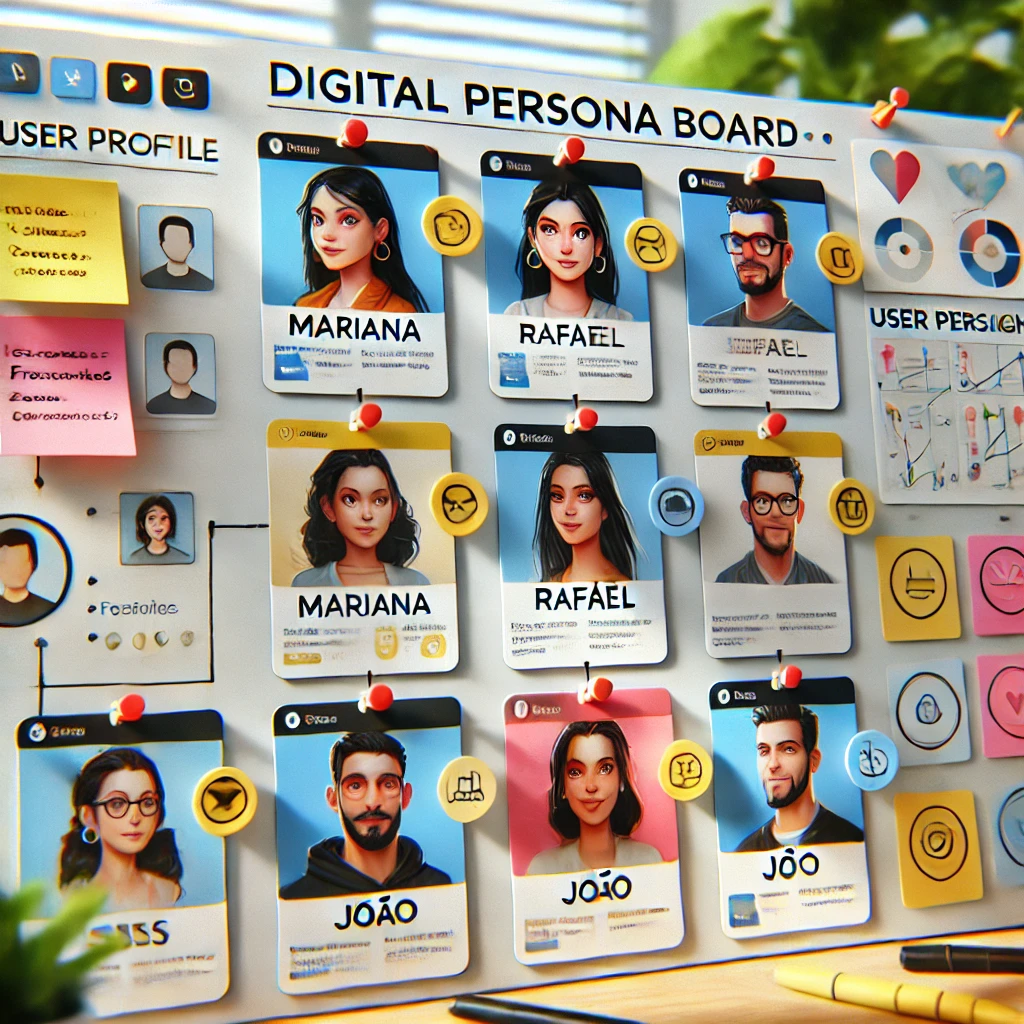Every great product starts with a question — and with someone willing to listen to the answer.
As a Product Manager, you’ve probably conducted user interviews to understand pain points, behaviors, and expectations. But the real challenge comes afterward: how do you turn dozens of conversations into something that truly guides product decisions?
That’s where personas come in — vivid, empathetic representations of the users your product seeks to serve.
1. Understand Before You Create
Before thinking about features, backlogs, or metrics, the first step is to understand the human behind the user. Interviews are essential to this process: they capture fragments of reality — motivations, frustrations, habits, values.
But to generate impact, these insights must be organized and shaped.
Turning interviews into personas is how you translate scattered voices into coherent stories that guide the product and connect the team with the real customer.
2. What Personas Are — and Why They Matter
User personas are fictional characters representing groups of users with similar behaviors and needs. They’re not simple demographic profiles — they’re symbols of empathy and focus.
When well-crafted, they help designers, developers, marketers, and PMs ask smarter questions:
- “Would this make sense to Mariana?”
- “Would Rafael actually use this feature?”
- “Does this flow solve João’s main pain point?”
These questions shift discussions and align the team with the product’s purpose.
3. When the Product Manager Needs to Create Personas
Many companies already have personas — but they’re not always up to date or representative of current users.
As a Product Manager, it may fall on you to review, complement, or even recreate them, especially when:
- The target audience has changed (e.g., expansion to another segment or country);
- The product evolved and brought new user types;
- Engagement or satisfaction data doesn’t match initial hypotheses;
- Recent interviews reveal unexpected behaviors.
In these cases, going back to the field is essential. Rehearing customers, reanalyzing patterns, and recreating more accurate personas is a core strategic responsibility of the PM.
4. From Interview to Profile — Centralizing Insights
After dozens of interviews, you’ll have lots of notes, quotes, and observations.
The key is to centralize and structure them into thematic blocks.
Group interview content into categories such as:
- Motivations and goals: what they try to achieve with your product;
- Pains and frustrations: what annoys, confuses, or discourages them;
- Behaviors and habits: when and how they interact with your product;
- Value criteria: what they consider essential (price, ease of use, trust, status, support, etc.).
Tools like Miro, Notion, Airtable, or FigJam help visualize and cross-reference these patterns, making it easier to identify representative profiles.
5. Building Personas — Step by Step
Once patterns are identified, create 2–4 key personas that represent the most relevant user groups.
Each persona should include:
- Fictional name and age (e.g., “Rafael Silva, 41 years old”)
- Photo or illustration (helps build empathy)
- Profession and usage context
- Main goals and tasks
- Pains and frustrations
- Real quotes from interviews
- What they value most in the product
- What they need to do easily
These elements make the persona come alive and keep the user present in every team decision.
6. Real Example of a Persona
Name: Rafael Silva
Age: 41
Profession: Small restaurant owner
Goal: Manage online orders without relying on manual spreadsheets
Pains: Lack of time and confusion across multiple platforms
Typical quote: “I just want something simple that works on my phone and alerts me if an order is late.”
Values: Simplicity, fast support, and delivery integration
Motivation: Grow the business without increasing staff
This persona may seem simple, but it transforms the team’s perspective:
- Design avoids cluttered screens and prioritizes mobile usability;
- Engineering focuses on stability and real-time notifications;
- Marketing emphasizes “simplicity and agility” in campaigns.
Everything starts with empathy turned into decision-making.
7. Keeping Personas Alive
Personas aren’t static documents — they’re living organisms. They must be revisited whenever new data or interviews appear.
Best practices include:
- Reviewing personas quarterly;
- Validating assumptions with usage data and feedback;
- Updating profiles as the product evolves;
- Involving the whole team to reinforce shared purpose.
When the team bases roadmap and prioritization decisions on personas, discussions shift from “what’s technically possible” to “what’s truly valuable for the user.”
8. Conclusion — Empathy as a Competitive Advantage
Building personas from interviews is more than a UX Research task — it’s a strategic product tool. It connects the team to reality, reinforces the product’s purpose, and reduces guesswork-driven decisions.
In the end, the Product Manager acts as a translator between the user and the business.
And the more empathetic and evidence-based that dialogue is, the more relevant and sustainable the product becomes.
Empathy is the starting point of every good strategy.

